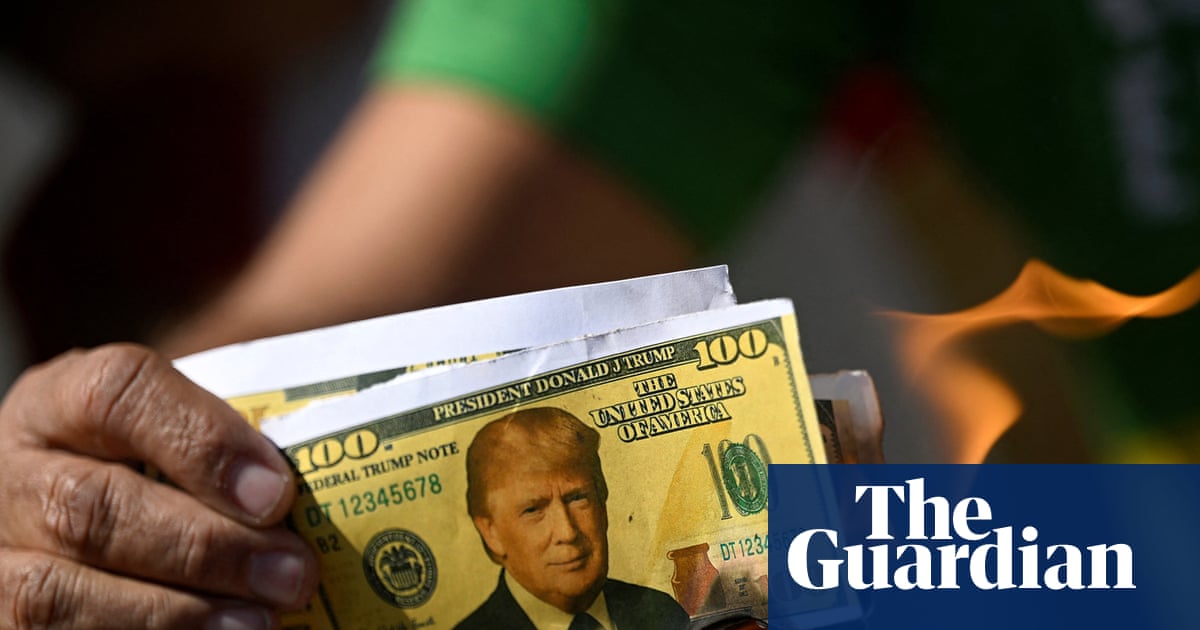Leaders of more than 60 countries have been plunged into a fresh race to secure trade deals with the US after Donald Trump unleashed global chaos with sweeping new tariff rates.
Trump’s latest blitz triggered a wave of market jitters and fears for jobs in some of the poorest countries, as tariff rates were signed off ranging from 50% to 10%.
There was a minor reprieve that opened the door to further negotiations, after the White House said the updated tariffs would take effect on 7 August, not on Friday, the deadline previously set by Trump.
The new rates, which Trump sees as benefiting US exporters, create uncertainty for dozens of countries, including longtime US allies. They have also raised fears of inflation in the US.
Rates were set at 25% for India’s US-bound exports, 20% for Taiwan and 30% for South Africa. Switzerland faces a rate of 39%. The deadline for a tariff deal with Mexico was extended by another 90 days.
Stock markets fell on both sides of the Atlantic, after earlier falls in Asia, amid investors fears about the impact on the global economy. Europe’s Stoxx 600 was down nearly 2% while the UK’s FTSE 100 was down 0.8%. Wall Street closed lower, with the Dow Jones, S&P 500 down over 1% and Nasdaq down more than 2%. The sell-off was exacerbated by weaker than expected jobs figures in the US.
Switzerland and chip powerhouse Taiwan are scrambling to negotiate deals after being hit by rates of 39% – one of the highest in the world – and 20% respectively.
Canada’s prime minister, Mark Carney, said his government was “disappointed” by Trump’s decision to increase US tariffs on Canadian goods from 25% to 35% with immediate effect – on the grounds Canada had failed to crack down on fentanyl and to increase border security.
South Africa’s president, Cyril Ramaphosa, said he would use the week to “negotiate as strongly and as hard as we can” to reduce a crippling 30% duty on goods.
Some of the world’s poorest and struggling countries were hit with punitive rates, including Syria, which faces a levy of 41%. Laos and Myanmar were hammered with rates of 40%; Libya, 30%; Iraq, 35% and Sri Lanka 20%.
Would-be EU member states were blindsided by punitive rates: Moldova 25%, Serbia 35% and Bosnia and Herzogovina30%.
There was some reprieve for Lesotho, a country that Trump described a state that “nobody has ever heard of” when halting USAid. It was facing 50% tariffs, an existential threat to its textile industry but came out on Friday with a 15% rate.
Lesotho’s $2bn economy is heavily dependent on duty-free exports to the US. The tiny African country declared a national state of disaster after the 50% rate was declared.
The Swiss franc touched its weakest in six weeks after being hit with one of the highest tariffs in the world, 39%, while the Canadian dollar was set for a seventh straight weekly loss.
Karin Keller-Sutter, the Swiss president, who was celebrating the country’s national day, said she had spoken to Trump on Thursday but that “no agreement could be reached”.
Pharma accounts for 50% of Swiss exports to the US, which may have been Trump’s target.
Kathleen Brooks, research director at XTB, said Switzerland got the rough end of Trump’s trade war. “The Swiss rate was a shock, and the Swiss government have said that they plan to keep negotiating with the US to secure a lower levy. Chocolatiers, watchmakers and pharma companies are all under threat,” she said.
Conspicuous as the only two trading partners listed at a 10% rate were the UK, the first to get a deal with Trump, and the Falkland Islands.
The EU’s 15% tariff rate as a single all-inclusive rate was confirmed in the executive order.
In a setback to the EU, cars were left out in the executive order. They are currently being taxed at 27.5%, with many EU car companies resuming deliveries to customers in the US after last Sunday’s deal with Trump.
The new specific rates will apply seven days after the date of the executive order, starting on 8 August. For goods already in transit or warehoused for consumption before 8 August, the previous tariff rate (10% + MFN rate) will apply until 5 October 2025.
Pharmaceuticals were conspicuous by their absence, given the White House said it had agreed a 15% rate on Monday, hours after Trump sealed the deal with the EU at his Scottish golf course.
Pharma chiefs, who have been in Trump’s crosshairs for months, were warned to reduce their prices to US patients by the US president. If they refused to, the federal government would “deploy every tool” in its arsenal to protect American families, the White House said.
Brazil’s tariff rate was set at 10%, but a previous order placed a 40% tariff on to punish the country for prosecuting its former president, Jair Bolsonaro.
Cambodia appeared to be close to reaching a deal after it said it would drop all tariffs on imports from the US and order up to 20 Boeing 737s.
